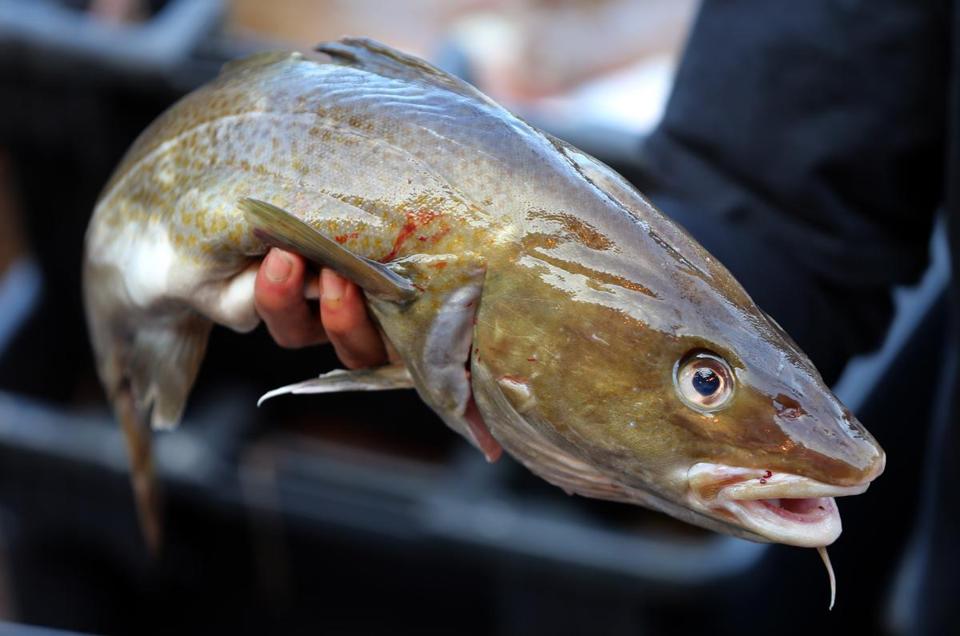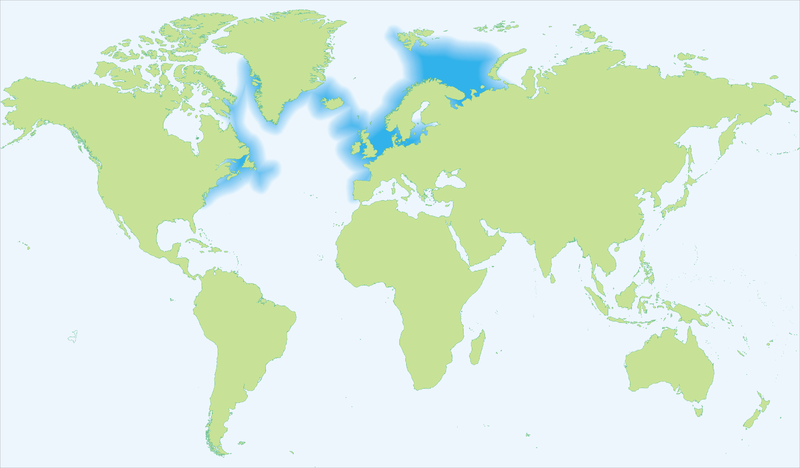Cod are bony marine fish that tend to spend their time just above the ocean floor, feeding on smaller fish and crustaceans. They are usually the apex predators of their
environment though smaller, juvenile cod are sometimes cannibalized by larger individuals. They are of the Order Gadiformes, which comprises many of the main fish harvested for human consumption, and are part of the larger Neoteleosti clade of bony fish. Neoteleosts have evolved a closed swim bladder in place of the ancestral lung and pectoral fins directly posterior to their opercula to counteract the force of water jetting through their gills. Additionally, their swim bladder helps them achieve neutral buoyancy, so they are dexterous swimmers. They have a second set of pharyngeal jaws that allow them to be evolutionarily adapted to multiple food sources.
This is reflected in their varied diet. Reproduction occurs yearly during a one to two month season between winter and spring near the sea floor, and the eggs drift for up to 3 weeks before hatching. Cod reach sexual maturity around 2 years of age, but the largest cod are by far the most productive, with large females capable of producing up to 9 million eggs a breeding season.
Resource
Images


